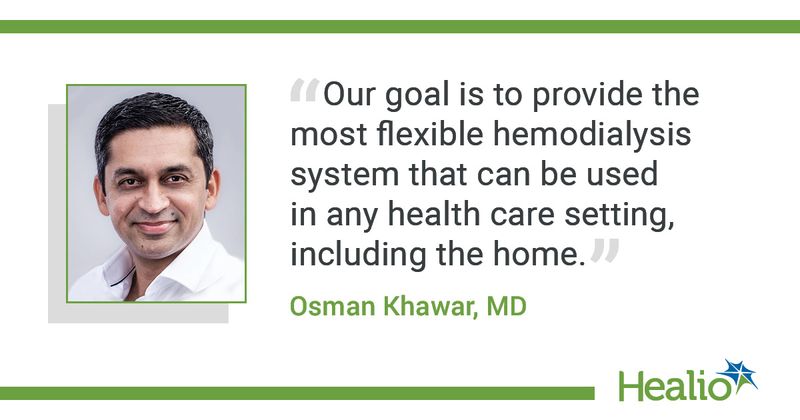Diality raises $28 million, readies clinical trial for mobile dialysis system
Click Here to Manage Email Alerts
Key takeaways:
- Diality Inc. has raised $28 million to continue development of its mobile hemodialysis system.
- Funds will support a clinical trial for home use and a 510(k) filing for use in health care settings.
Diality Inc. has raised $28 million to advance its mobile hemodialysis system through regulatory and clinical review, according to a company press release.
Osman S. Khawar, MD, CEO of Diality, said the California-based company is “pleased” with the round of investment for what is intended to be “the most flexible hemodialysis system that can be used in any health care setting, including the home,” he said in the release.

The device is intended for use by professional staff, as well as patients and their caregivers, and covers “the broadest range of prescriptions, from low-dose extended treatments to high-dose in-center treatments,” Khawar said.
The new funds will support initiation and early enrollment for a clinical trial of the device, as well as go toward 510(k) filing and pre-commercialization efforts of the company. The company also cited the upcoming trial and 510(k) filing after closing a $24 million Series B2 funding round in March 2022.
Diality expects the prospective, non-randomized, multicenter and open-label trial to support the use of the system at home, and the 510(k) filing is expected to enable commercial launch in hospitals, skilled nursing facilities and de novo clinics. The filing is set to cover prescriptions, including intermittent hemodialysis, sustained low-efficiency dialysis and prolonged intermittent renal replacement therapy.
According to the release, the system can achieve up to double the dialysate flow rates of its competitors, allowing for either fewer treatments per week or shorter treatment duration.
